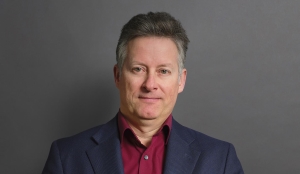Get connected faster: panel debate with industry on implementation of the EECC
Get connected faster: implementing new telecoms rules
Bird & Bird's Regulatory & Public Affairs seminar in Brussels on 3 December also featured a panel debate with various industry voices on the implementation of the recently adopted European Electronic Communications Code. Po-Wen Liu, senior economist of the European Investment Bank, expressed the view that the Code creates the right incentives for public and private investment in the further deployment of very high capacity networks (VHCNs) across the EU.
The Bank has invested in several European projects and expects that network deployment in very remote areas based on geographical surveys needs to be funded with public money. The ultimate goal is to drive sustainable infrastructure competition with at least two/three Fibre-to-the-home (FttH) providers in each region. Po-Wen Liu applauded the symmetrical access and co-investment provisions in the Code.
It was also noted that physical infrastructure access (access to ducts and cables) presents a further opportunity to drive down the cost of fibre network roll-out. Nevertheless, challenges remain with respect to the definition of VHCNs (now in the hands of BEREC, the body of independent telecoms regulators), complex rules for co-investment for operators with Significant Market Power (SMP), the lack of spectrum harmonisation, defining transnational markets, as well as the potential for inconsistent implementation of the Code in each Member State.
Christof Sommerberg, SVP Public Affairs, Deutsche Glasfaser, an independent infrastructure FttH operator, spoke about risk management, transaction and operating costs. From his perspective the Code will have a limited impact on fibre roll-out incentives for non-SMP operators compared to the current regulatory framework.
Concerns were raised in relation to the designation of digital exclusion areas which may pose a threat to private long-term investment, since the outlook is limited to three years and does not reflect the available deployment capacity. Due to capacity restrictions, economically viable areas may not be covered with fibre within the period, while state aid procedures cannot ease capacity restrictions. In order to increase deployment of infrastructure, calls were made to ease construction requirements, reduce permits and related costs and redefine the role of local authorities. Mr Sommerberg also pointed out that action needs to be taken against false fibre advertising. Only fibre (FttH or Fibre-to-the-building) connections should be listed as enabling true fibre speeds and copper switch-off should be carried out based on non-discrimination.
The review of the Broadband Cost Reduction Directive was also highlighted by participants, with a need to include an obligation for building owners to allow access to buildings to enable full fibre roll-out. For now, it was also noted that parallel FttH networks are unlikely to be rolled out in rural areas, especially as open access, concerning bitstream or unbundled fibre, minimises incentives for parallel networks of the same technical capabilities.
Ralf Nigge, Head of EU Regulatory Policy, Deutsche Telekom (DT), noted that on the harmonisation front, the Code has not delivered in key areas such as spectrum policy and end-user rights. DT is following the implementation of the Code in nine Member States and notes a common concern that the Code does not strike the right balance between national differences and harmonisation. In his view, the Code should have gone further on spectrum policy and the Commission should use its soft powers in the field of spectrum policy to improve spectrum auction conditions.
DT already sees some negative outcomes with respect to 5G auction conditions, where intervention might be needed. In terms of access regulation, the Commission was keen to harmonise, but problems are mostly local or national. The co-investment provisions in the Code are welcome in principle, but very prescriptive. This could limit private investment under this model if the rules are not applied in a flexible manner by national regulators.
Mark De Zutter, Public Affairs Director, Media & Telecom, Proximus Group, pointed out that the Code has true potential to establish an EU single telecoms market, but that harmonisation remains an overall concern. On a local level, there remain doubts as to whether enough investment capital is available. The Code has provided the possibility and the mind shift for market players to work together, like the Proximus cooperation with Orange for 5G on passive antenna infrastructure. De Zutter called for BEREC to provide guidance on principle-based regulation that allows the market to do the job. He said that the Code and its harmonisation should provide a better balance between consumer protection and industry needs.
Anthony Rosen, Legal Director, Bird & Bird (London), spoke about how the extended scope of the Code applies to online application/over-the-top-players (OTT) communications services. The drafters of the Code recognised the increased substitution between these services and traditional electronic communications services in expanding the definition of "electronic communication services" in the Code to include number-independent interpersonal communications services with minor and purely so-called ancillary services excluded.
A word of caution was raised in relation to the proposed e-Privacy Regulation, in the event that it is adopted, since this is expected to include ancillary services within its scope, yet enforcement needs to be balanced with the General Data Protection Regulation (GDPR). It was noted that a number of independent services will be subject to a lighter touch regime and that BEREC has an important role to play to ensure harmonisation minimises the risk of divergence and over-regulation. Next year will be key for monitoring implementation of the Code as well as compliance planning.
Overall, the speakers expressed different opinions as to whether the Code incentivises market players to invest sufficiently to ensure the achievement of the Gigabit society goals. They agreed that the Code does not do enough to strike the right balance between harmonisation and flexibility. Nonetheless, the shift of competences to BEREC was viewed as a good first step towards harmonisation.
The panel debate was moderated by Marianne Minnecré, Principal Regulatory Counsel of Bird & Bird, based in The Hague.
For further information: Feyo Sickinghe.


